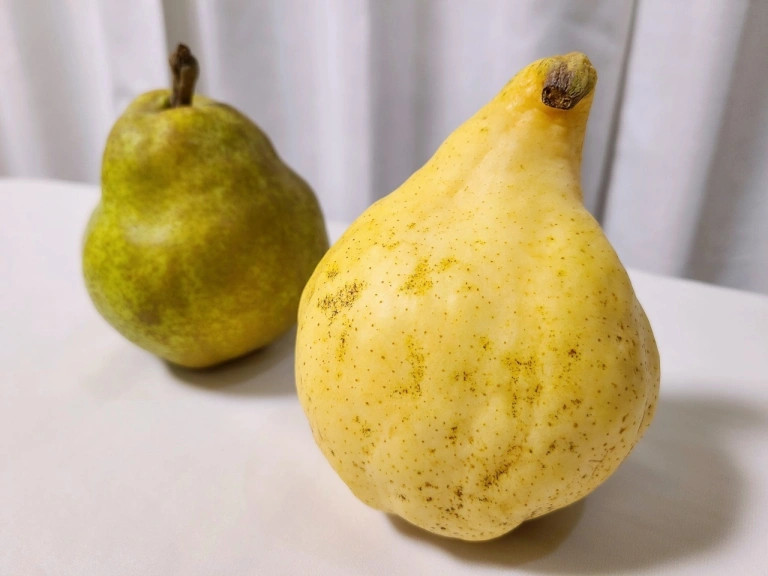
This luxury pear is grown almost exclusively in Niigata. Is it worth splurging on?
You’ve probably heard of Japan’s expensive, luxury fruit, which has become famous around the world for things such as h as a single bunch of grapes going for 10,800 yen (US$79.18) for a single bunch of grapes. But these high-quality fruits are usually more than just any fruit; they’re often carefully cultivated, harvested, and ripened by hand to give them the most delicious, juicy, and fragrant flesh.
That’s why our Japanese-language reporter Maro was excited to have the chance to direct order a single European pear from a farm in Niigata, west of Tokyo. It was a “Le Lectier” pear, which is a European pear (as opposed to the round Asian pear) that was introduced to Niigata from France about 120 years ago. It’s said that when Niigata farmers first tasted these pears, their sweetness left such an impression that they decided to grow them themselves, and in 1903, they began ordering saplings from France.
Le Lectier pears are notoriously difficult to cultivate, so eventually, French farmers stopped growing them, and nowadays they are rarely found in the country. In Niigata, however, cultivation only slowed for a time as researchers studied how best to grow them, and now they have become one of the most famous fruits in the prefecture.
Still, because of how difficult they are to grow, they apparently only appear in markets for about a month every year, which is why they’ve been nicknamed “The Phantom Pear”.
Le Lectier pears are almost as yellow as a banana, although they’re picked when they’re still green. After harvesting, their environment is tightly controlled for 40 days as they ripen and their flavor, color, and aroma begin to change.
As one would expect from the time and effort it takes to make these pears delicious, they tend to be expensive. Maro bought her single pear for 500 yen (US$3.66), but if you consider the fact that, among all the European pears sold in Japan, Le Lectiers are considered to be the finest, that price might be worth it.
Since Maro doesn’t often eat European pears, she chose to compare it to a La France pear, a more common variety of European pear in Japan (Maro had always thought “La France” was just what you called all European pears, but she now recognizes that was a misunderstanding).
▼ La France on the left, Le Lectier on the right
Maro tried the La France pear first. It had a pretty crunchy texture, somewhere in between an Asian pear and an apple. Its unique flavor was exactly the “European pear” flavor she was expecting.
The Le Lectier, however, had much juicier flesh. Maro almost had to slurp as she bit into it. It was also nice and smooth, without some of the roughness you might find in a La France. It was so unbelievably juicy that it almost felt like it was dissolving in her mouth.
Flavorwise, it was rich and flavorful without any of the acidity of the La France, but it wasn’t overly sweet or cloying. If Maro had to describe the flavor in one word, she would say “refined”.
Maro would say it’s worth every yenny, and even though it’s called the “Phantom Pear”, it’s actually relatively inexpensive for a high-quality fruit, considering a luxury watermelon cost us 5,400 yen last summer. The only problem is that Le Lectier orchards only make up eight percent of the nation’s pear orchards, so it can be rather difficult to find. They are only on sale for about a month at a time, so if you want to try one, now is the time!
Images © SoraNews24
● Want to hear about SoraNews24’s latest articles as soon as they’re published? Follow us on Facebook and Twitter!
[ Read in Japanese ]

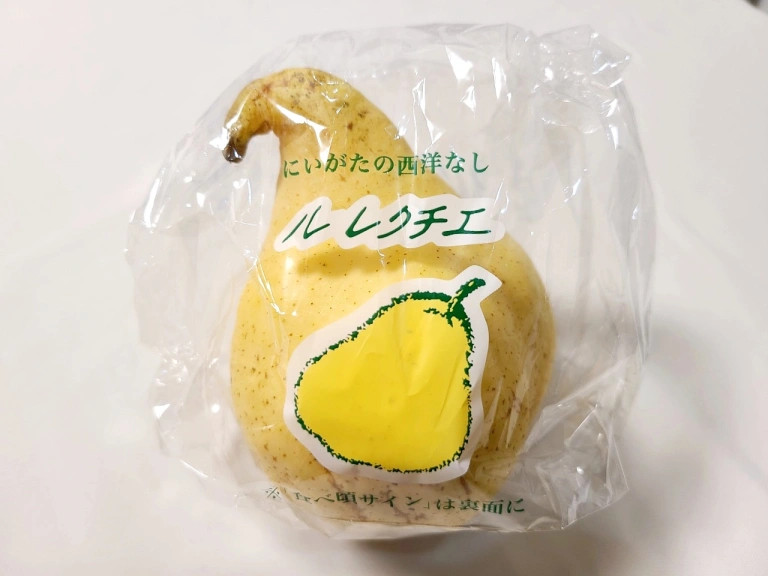
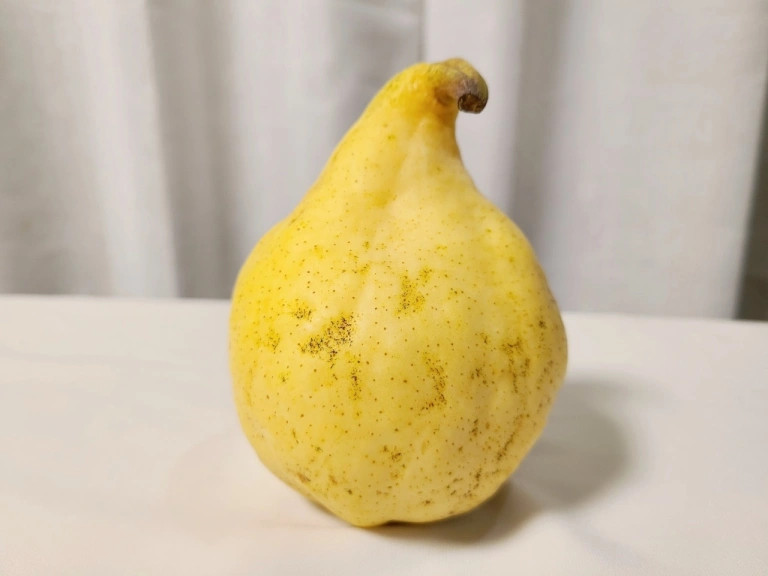
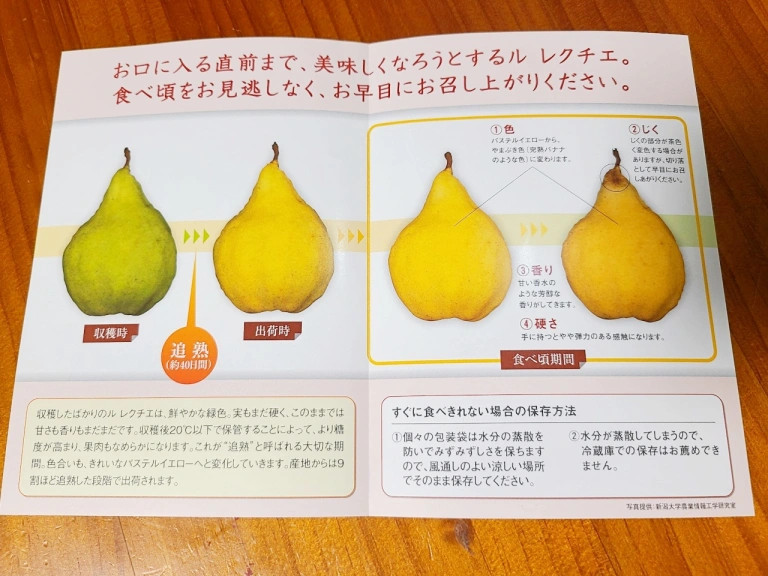
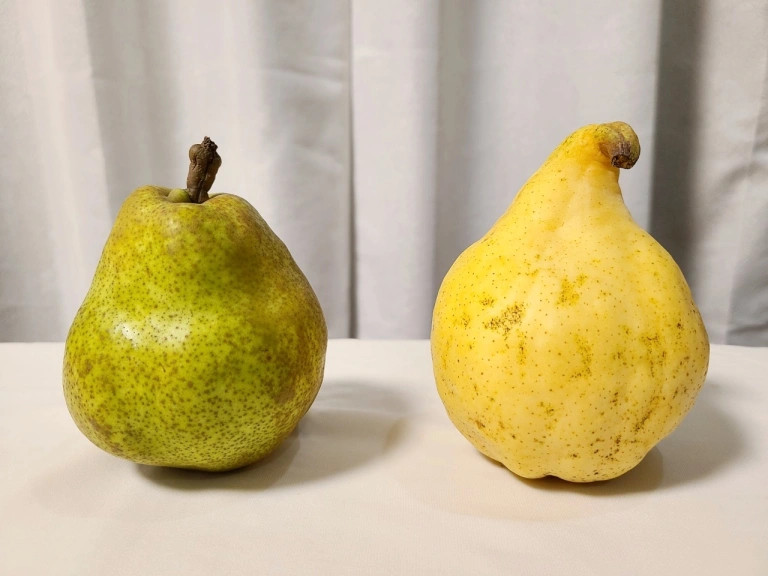
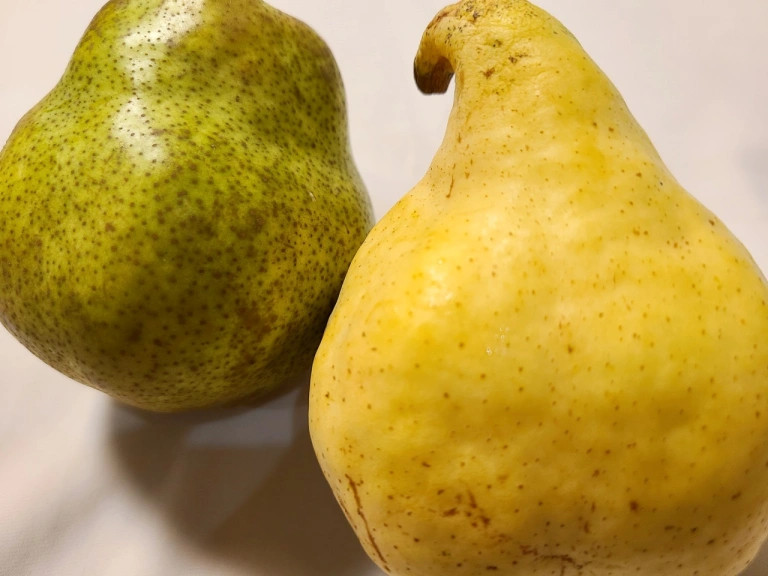
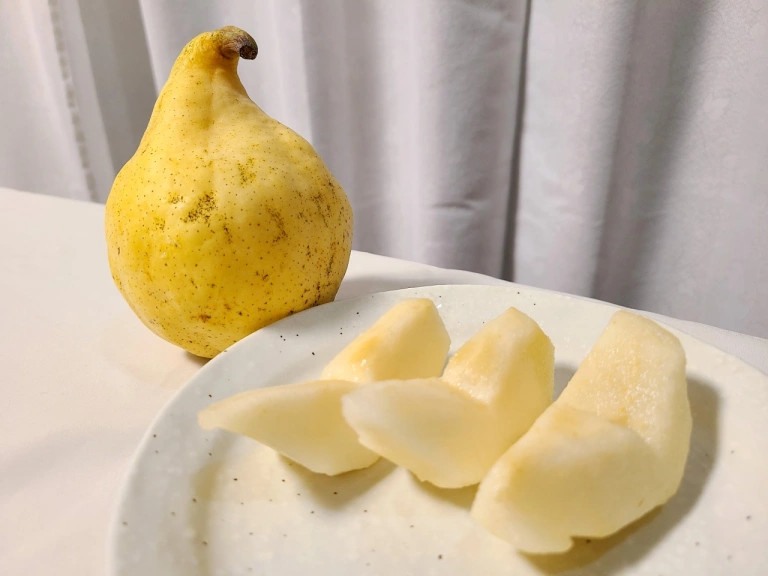
 Avengers ice cream assembles at Baskin-Robbins Japan【Taste test】
Avengers ice cream assembles at Baskin-Robbins Japan【Taste test】 Domino’s Pizza now sells fancy gold-topped cakes in Japan【Taste test】
Domino’s Pizza now sells fancy gold-topped cakes in Japan【Taste test】 Tokyo’s newest crane game prize is prized pears from west Japan, and you’re guaranteed to win
Tokyo’s newest crane game prize is prized pears from west Japan, and you’re guaranteed to win We tried Japan’s Strawberry Daifuku? liqueur, one of three dessert-themed liqueurs
We tried Japan’s Strawberry Daifuku? liqueur, one of three dessert-themed liqueurs The McDonald’s Hokkaido Salmon Burger is a sell-out hit…outside of Japan【Taste test】
The McDonald’s Hokkaido Salmon Burger is a sell-out hit…outside of Japan【Taste test】 McDonald’s new Happy Meals offer up cute and practical Sanrio lifestyle goods
McDonald’s new Happy Meals offer up cute and practical Sanrio lifestyle goods All-you-can-drink Starbucks and amazing views part of Tokyo’s new 170 meter-high sky lounge
All-you-can-drink Starbucks and amazing views part of Tokyo’s new 170 meter-high sky lounge Studio Ghibli glasses cases let anime characters keep an eye on your spectacles
Studio Ghibli glasses cases let anime characters keep an eye on your spectacles Beautiful Sailor Moon manhole cover coasters being given out for free by Tokyo tourist center
Beautiful Sailor Moon manhole cover coasters being given out for free by Tokyo tourist center More foreign tourists than ever before in history visited Japan last month
More foreign tourists than ever before in history visited Japan last month Super Nintendo World expansion gets delayed for several months at Universal Studios Japan
Super Nintendo World expansion gets delayed for several months at Universal Studios Japan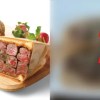 Is Japan’s massive Shizuoka steak sandwich really as delicious as it looks in promo photos?
Is Japan’s massive Shizuoka steak sandwich really as delicious as it looks in promo photos? Kyoto’s 100 Demons yokai monster parade returns!
Kyoto’s 100 Demons yokai monster parade returns!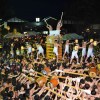 “Half-naked men only in loincloths” drum battle returns to Hida festival for first time in five years
“Half-naked men only in loincloths” drum battle returns to Hida festival for first time in five years Hamster abandoned at Tokyo ramen restaurant gets new home
Hamster abandoned at Tokyo ramen restaurant gets new home Disney princesses get official manga makeovers for Manga Princess Cafe opening in Tokyo
Disney princesses get official manga makeovers for Manga Princess Cafe opening in Tokyo Starbucks reopens at Shibuya Scramble Crossing with new look and design concept
Starbucks reopens at Shibuya Scramble Crossing with new look and design concept Beautiful new Final Fantasy T-shirt collection on the way from Uniqlo【Photos】
Beautiful new Final Fantasy T-shirt collection on the way from Uniqlo【Photos】 Is the new Shinkansen Train Desk ticket worth it?
Is the new Shinkansen Train Desk ticket worth it? Foreign English teachers in Japan pick their favorite Japanese-language phrases【Survey】
Foreign English teachers in Japan pick their favorite Japanese-language phrases【Survey】 Japanese convenience store packs a whole bento into an onigiri rice ball
Japanese convenience store packs a whole bento into an onigiri rice ball We try out “Chan Ramen”, an underground type of ramen popular in the ramen community
We try out “Chan Ramen”, an underground type of ramen popular in the ramen community Studio Ghibli releases Kiki’s Delivery Service chocolate cake pouches in Japan
Studio Ghibli releases Kiki’s Delivery Service chocolate cake pouches in Japan Japan’s bone-breaking and record-breaking roller coaster is permanently shutting down
Japan’s bone-breaking and record-breaking roller coaster is permanently shutting down New definition of “Japanese whiskey” goes into effect to prevent fakes from fooling overseas buyers
New definition of “Japanese whiskey” goes into effect to prevent fakes from fooling overseas buyers Our Japanese reporter visits Costco in the U.S., finds super American and very Japanese things
Our Japanese reporter visits Costco in the U.S., finds super American and very Japanese things Studio Ghibli unveils Mother’s Day gift set that captures the love in My Neighbour Totoro
Studio Ghibli unveils Mother’s Day gift set that captures the love in My Neighbour Totoro Foreign passenger shoves conductor on one of the last full runs for Japan’s Thunderbird train
Foreign passenger shoves conductor on one of the last full runs for Japan’s Thunderbird train Domino’s Japan now sells…pizza ears?
Domino’s Japan now sells…pizza ears? New Japanese KitKat flavour stars Sanrio characters, including Hello Kitty
New Japanese KitKat flavour stars Sanrio characters, including Hello Kitty Kyoto creates new for-tourist buses to address overtourism with higher prices, faster rides
Kyoto creates new for-tourist buses to address overtourism with higher prices, faster rides Sales of Japan’s most convenient train ticket/shopping payment cards suspended indefinitely
Sales of Japan’s most convenient train ticket/shopping payment cards suspended indefinitely Sold-out Studio Ghibli desktop humidifiers are back so Totoro can help you through the dry season
Sold-out Studio Ghibli desktop humidifiers are back so Totoro can help you through the dry season Japanese government to make first change to romanization spelling rules since the 1950s
Japanese government to make first change to romanization spelling rules since the 1950s Ghibli founders Toshio Suzuki and Hayao Miyazaki contribute to Japanese whisky Totoro label design
Ghibli founders Toshio Suzuki and Hayao Miyazaki contribute to Japanese whisky Totoro label design Doraemon found buried at sea as scene from 1993 anime becomes real life【Photos】
Doraemon found buried at sea as scene from 1993 anime becomes real life【Photos】 Tokyo’s most famous Starbucks is closed
Tokyo’s most famous Starbucks is closed One Piece characters’ nationalities revealed, but fans have mixed opinions
One Piece characters’ nationalities revealed, but fans have mixed opinions We asked a Uniqlo employee what four things we should buy and their suggestions didn’t disappoint
We asked a Uniqlo employee what four things we should buy and their suggestions didn’t disappoint Princesses, fruits, and blacksmiths: Study reveals the 30 most unusual family names in Japan
Princesses, fruits, and blacksmiths: Study reveals the 30 most unusual family names in Japan Ginza hotel serves up one of the best breakfasts in Tokyo
Ginza hotel serves up one of the best breakfasts in Tokyo SoftBank’s mascot dog behaving badly at bizarre press conference
SoftBank’s mascot dog behaving badly at bizarre press conference We try super rare Shizuoka food souvenirs in the form of blue gelato and purple baumkuchen
We try super rare Shizuoka food souvenirs in the form of blue gelato and purple baumkuchen Something for soy milk skeptics: cola and pear flavors
Something for soy milk skeptics: cola and pear flavors Ensure your fruit never rolls away with pentagon oranges
Ensure your fruit never rolls away with pentagon oranges McDonald’s adds Doraemon exclusives to its menu in Japan【Taste test】
McDonald’s adds Doraemon exclusives to its menu in Japan【Taste test】 Stylish green tea “chablets” from Shizuoka are our new way favorite way to grab a cuppa
Stylish green tea “chablets” from Shizuoka are our new way favorite way to grab a cuppa Vegetables are smarter than fruits: Three high IQ Japanese veggies
Vegetables are smarter than fruits: Three high IQ Japanese veggies 7 Halloween-themed afternoon teas you won’t want to miss this year
7 Halloween-themed afternoon teas you won’t want to miss this year Taste-testing Japan’s crazy-expensive 3,240-yen (US$29) persimmon
Taste-testing Japan’s crazy-expensive 3,240-yen (US$29) persimmon Welcome the New Year with a calendar of hunky Japanese farmers 【Pics】
Welcome the New Year with a calendar of hunky Japanese farmers 【Pics】 The Fuwatoro Yamaimo Teppan just might be 7-Eleven Japan’s dish of the year【Taste test】
The Fuwatoro Yamaimo Teppan just might be 7-Eleven Japan’s dish of the year【Taste test】 This super-rare Japanese banana has edible skin!【Taste test】
This super-rare Japanese banana has edible skin!【Taste test】 Funasshi’s unofficial mascot Satosshi grabs a pear burger and risks getting beaten up
Funasshi’s unofficial mascot Satosshi grabs a pear burger and risks getting beaten up Melon topped with ice cream: two great Hokkaido tastes in one crazily delicious package
Melon topped with ice cream: two great Hokkaido tastes in one crazily delicious package All 47 Starbucks Japan’s local Jimoto Frappuccinos, ranked by calorie count, plus what each one is
All 47 Starbucks Japan’s local Jimoto Frappuccinos, ranked by calorie count, plus what each one is
Leave a Reply